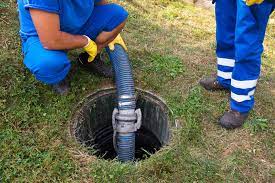Saturated leach fields can result from severe rainfall or snowmelt, and there are several steps to fix them. The first step is to reduce the amount of water that is sent down the system for several weeks, and allow the ground to dry naturally. Once the ground is dry, introduce bacteria to the system. Complement this process with aeration, which restores the natural balance of bacteria in the soil. Bacteria in the soil clean wastewater, and the process is complete.
Identifying the cause of a saturated leach field
Typically, a leach field is designed to keep groundwater free from contamination. However, sometimes these fields become saturated. To fix this problem, the first thing to do is to reduce the amount of water in the leach field until the soil dries. This can be done by following a few steps. This article focuses on the most common reasons for saturated leach fields. Listed below are some ways to solve this problem.
Over-filling the leach field can cause an odor. This odor may come from an organic material buildup in the plumbing system or a clogged leach field. To fix this odor, you can use an environmentally-friendly drain cleaner. If a foul smell continues, the problem is more likely a clogged leach field. In such cases, you should seek professional help as soon as possible.
Preventing a saturated leach field
A clogged or hydraulically overloaded leach field can cause puddles in a leach field. Sewage backed up can literally spill onto the ground and smell like rotten eggs. A clogged leach field is especially problematic because the perforated pipes can break or disconnect if a large vehicle drives by. However, you can prevent a clogged leach field by adding biological additives or rerouting rainwater. If your leach field has been saturated, the professionals can pump it out and advise you on ways to prevent flooding.
Whether or not your leach field is saturated is a matter of how deep the soil is. When the leach field is clogged, wastewater will rise in pressure, causing the leach field to leak in one spot. Other signs of a saturated leach field include puddles on the surface. Water may also puddle because it is under enormous pressure. If you’ve already noticed a puddle on your leach field, make sure to take action quickly before the problem worsens.
Cleaning a clogged leach field
A clogged leach field can be a problem for a variety of reasons, but the most common are foul odors, slow drainage, and sewage backing up into the home. You may notice tall grass growing in the yard or notice that soil is sinking and puddling in your yard. If you have these signs, it’s time to call a plumber. American Rooter specializes in cleaning clogged leach fields, as well as drains and sewer lines.
The first sign that your leaching bed is not working properly is abnormally wet soil around the bed. You should fix the problem as soon as possible. Otherwise, wastewater can overflow into nearby areas, posing a health risk and polluting the environment. If you don’t fix the problem, local authorities may force you to replace your entire septic system. Cleaning a clogged leach field is an essential part of your septic system’s maintenance and will help extend its lifespan.
Repairing a clogged leach field
If you notice puddles in your leach field, the problem is likely caused by a clogged leach field or hydraulic overload. If there is excess effluent, it may actually pool on the ground and smell like rotten eggs. The clog is more likely to result in a sewage backup than a hydraulic overload. A clogged leach field is also likely to have recurring clogs or backups.
One of the first things you should do when you notice a clogged leach field is remove any solids that may have built up in the pipes. This can be done by using a plumber’s snake to unclog the pipe. If the pipe breaks, the wastewater will push up through the leach field, resulting in flooding. The repair process will depend on the nature of the problem. Sometimes, there may be no other option but to replace the entire leach field.

